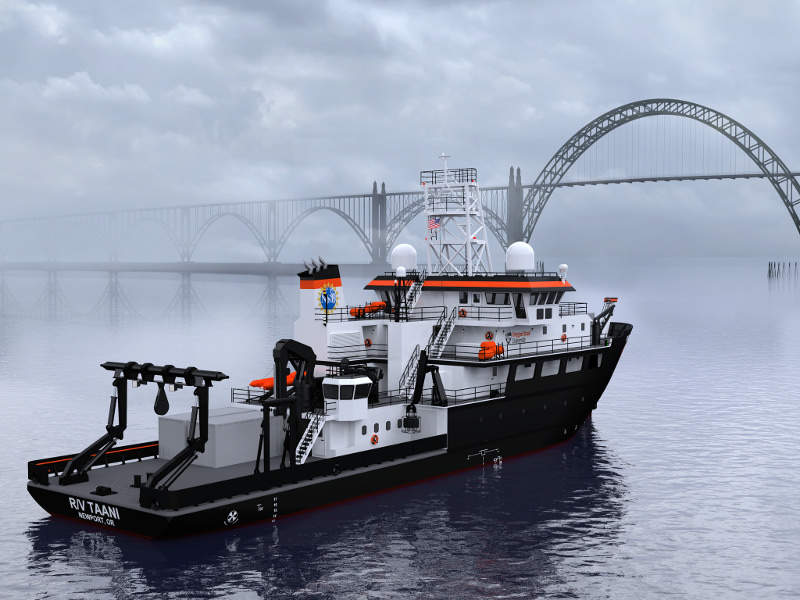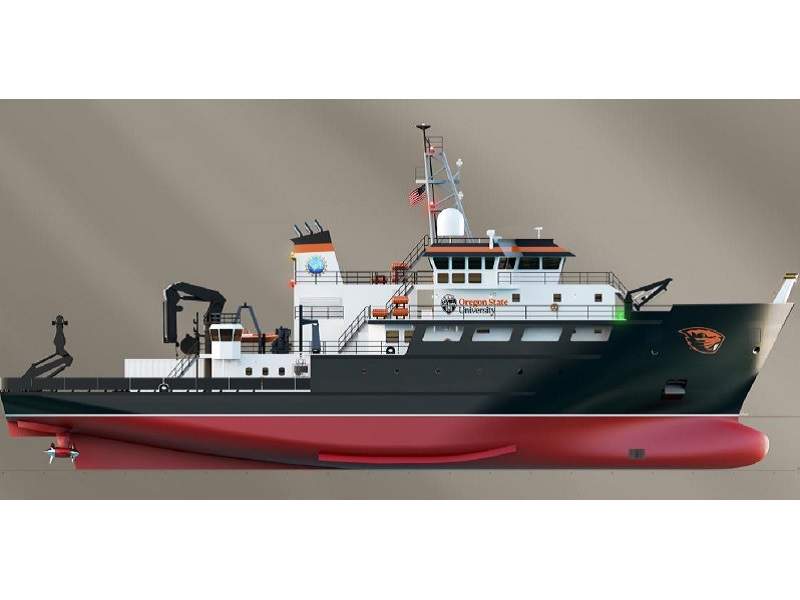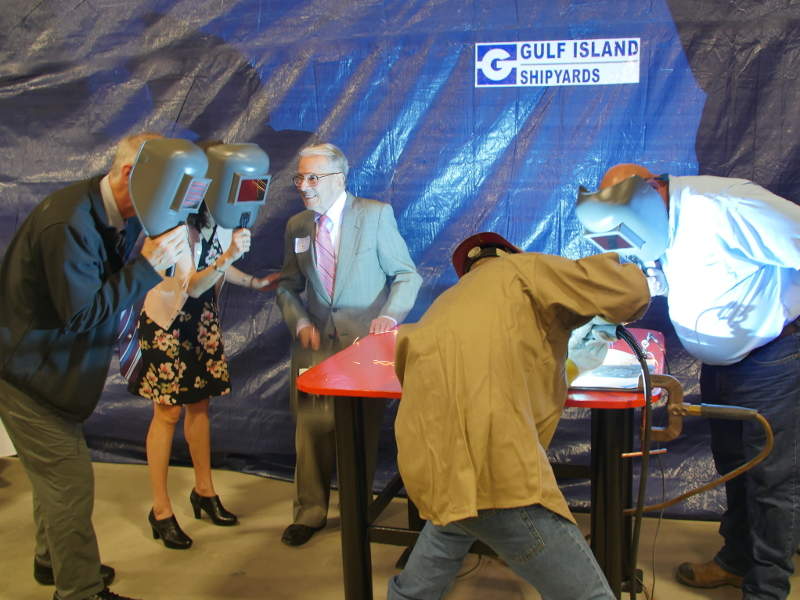R/V Taani is a regional-class research vessel (RCRV) being built by Gulf Island Shipyards in Houma, Louisiana, for the National Science Foundation (NSF).
Operated by the Oregon State University (OSU), the ship will support near-shore research and perform general-purpose, interdisciplinary, oceanographic operations in shallow coastal bay areas.
The new research ship will replace R/V Oceanus, which was operated by Woods Hole Oceanographic Institution (WHOI) until it was transferred to OSU in 2012 to replace its Wecoma research vessel.
In January 2013, NSF initially selected OSU for leading the institution on the design phase of the RCVR vessels, which aim to strengthen the marine science research capabilities of the US.
OSU placed a contract with Gulf Island Shipyards for the construction of an RCRV vessel in July 2017. The contract also includes options for building two additional vessels. The shipyard received a contract modification for building the second vessel in June 2018.
The keel-laying ceremony of the first RCVR, R/V Taani, was held in November 2018. The research ship is scheduled to be delivered by mid-2021.
R/V Taani RCRV features
The vessel will have an overall length of 60.6m, a beam of 12.4m, and a draft of 3.81m. It will have a gross tonnage of 1,549t and the capacity to remain at sea for 21 days.
Taani RCRV will have the capacity to hold 240m³ of diesel fuel, 338m³ of ballast water, 31m³ of potable water, 28m³ of greywater, 3.2m³ of blackwater, and 16m³ of diesel exhaust fluid.
The vessel will be capable of performing sampling and gathering data of surface, mid-water, and seafloor parameters. It can also deploy and recover unmanned aerial systems (UAS), autonomous surface vehicles (ASV), weather balloons, moorings, and coring equipment.
Ship-to-shore communications will be available through high-speed satellite communication (SATCOM) systems.
Deck and accommodation details
Main, wet, and computer labs, will be located on the main deck, as well as a mess, galley and a common lounge. There will be a science stateroom for passengers with limited mobility.
The vessel will be installed with the main A-frame, a portable A-frame, an aft crane, a portable crane, and hydro and ocean winches. Scientific equipment on board the ship will include a wave radar, an anemometer, a barometer, a photosynthetically active radiation (PAR) sensor, a scientific echo sounder, and a multi-beam sonar.
The first level will have a data presence centre for data collection and ship-wide network racks. The foredeck of the first level will house mooring equipment and offer a large open deck area forward on the second level.
A pilothouse will be featured on the vessel, with overhanging bridge wings and sloped windows for increasing the side visibility. It will also have a separate chart / radio room.
R/V Taani will have the capacity to accommodate up to 16 marine technicians in eight double staterooms, including an accessible science berth and a marine technician berth. It will also accommodate 12 crew members in seven single berths and three double berths.
Propulsion of R/V Taani
R/V Taani will be powered by Siemens Blue Drive PLUSC™ diesel-electric propulsion (DEP) system, which develops a maximum power of 871bkW at 1,800rpm. The propulsion system will integrate two identical azimuthing twin propeller Z-drive thrusters, and two bow thrusters, including a retractable azimuth thruster and a shallow draft azimuth jet thruster.
The ship will also be fitted with two water-cooled electric propulsion motors, each with a rated power output of 650kW at 1,200rpm.
It will sail at a cruise speed of 11k and a maximum speed of 13k. The ship will have a range of 6,600nm at 12k.
Funding
The total estimated cost approved by the NSF for the construction of the RCRV vessels is $365m. OSU received a $121.88m grant from the NSF to initiate the construction of the first vessel in July 2017.
The NSF awarded an $88m grant to OSU for the construction of the second RCRV vessel in 2018.










